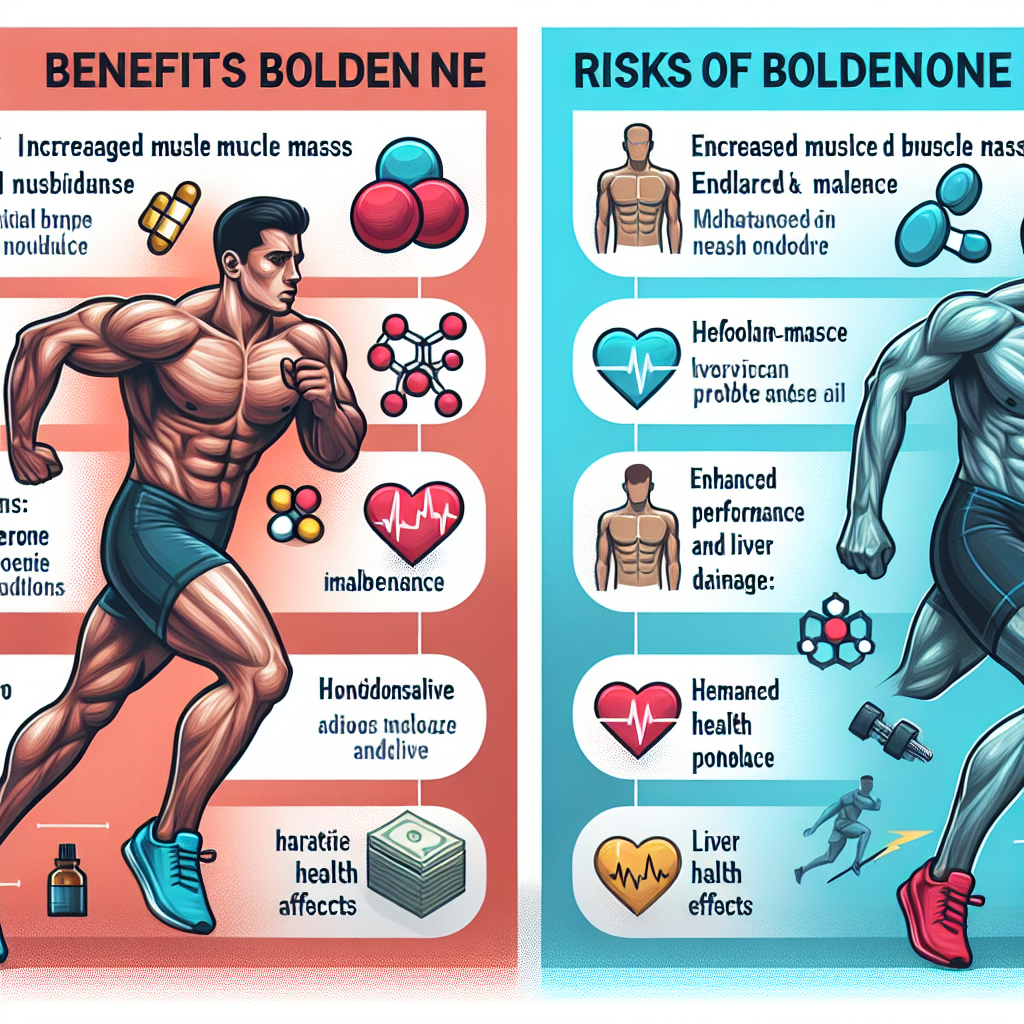-
Table of Contents
Boldenone: Benefits and Risks for Athletes
Boldenone, also known as Equipoise, is a synthetic anabolic-androgenic steroid (AAS) that has gained popularity among athletes for its potential performance-enhancing effects. It was originally developed for veterinary use, but has since been used by bodybuilders and other athletes to increase muscle mass, strength, and endurance. However, like any other AAS, Boldenone comes with its own set of benefits and risks that athletes should be aware of before using it.
Pharmacokinetics and Pharmacodynamics
Boldenone is a modified form of testosterone with a double bond between the first and second carbon atoms. This modification reduces its androgenic potency, making it less likely to cause side effects such as hair loss and acne. It also has a longer half-life compared to testosterone, with an estimated half-life of 14 days (Vida, 1969). This means that it can be taken less frequently, making it more convenient for athletes.
Like other AAS, Boldenone works by binding to androgen receptors in the body, which then stimulates protein synthesis and increases nitrogen retention in the muscles. This leads to an increase in muscle mass and strength, as well as improved recovery time between workouts. It also has a mild estrogenic effect, which can help with joint lubrication and reduce the risk of injury (Kicman, 2008).
Benefits for Athletes
The main benefit of Boldenone for athletes is its ability to increase muscle mass and strength. Studies have shown that it can significantly increase lean body mass and muscle size when combined with resistance training (Kouri et al., 1995). This makes it a popular choice among bodybuilders and other strength athletes looking to improve their physique and performance.
Another potential benefit of Boldenone is its ability to improve endurance. A study on rats found that Boldenone increased the number of red blood cells, which can improve oxygen delivery to the muscles and delay fatigue (Kicman, 2008). This could be beneficial for endurance athletes such as runners and cyclists.
Additionally, Boldenone has been shown to have a positive effect on collagen synthesis, which can improve joint health and reduce the risk of injury (Kicman, 2008). This is especially important for athletes who put their joints under a lot of stress, such as weightlifters and football players.
Risks for Athletes
While Boldenone may offer some benefits for athletes, it also comes with potential risks that should not be ignored. Like other AAS, it can cause a range of side effects, including acne, hair loss, and increased aggression. It can also have a negative impact on cholesterol levels, potentially increasing the risk of cardiovascular disease (Kicman, 2008).
One of the biggest risks associated with Boldenone is its potential to cause virilization in women. This refers to the development of male characteristics, such as a deeper voice, facial hair growth, and an enlarged clitoris. These effects are irreversible and can have a significant impact on a woman’s physical and emotional well-being (Kicman, 2008).
Another concern with Boldenone is its potential to cause liver damage. While it is not considered to be as hepatotoxic as other AAS, it can still have a negative impact on liver function if used in high doses or for extended periods of time (Kicman, 2008).
Real-World Examples
One real-world example of Boldenone use in sports is the case of sprinter Ben Johnson, who was stripped of his gold medal at the 1988 Olympics after testing positive for the steroid. This incident brought attention to the use of performance-enhancing drugs in sports and the potential consequences for athletes who use them.
Another example is the case of baseball player Alex Rodriguez, who admitted to using Boldenone during his career. He received a 162-game suspension for his use of the steroid, highlighting the serious consequences that athletes can face for using banned substances.
Expert Opinion
According to Dr. Harrison Pope, a leading expert on AAS use in sports, “Boldenone is a powerful steroid that can have significant benefits for athletes, but it also comes with a range of potential risks that should not be taken lightly.” He also emphasizes the importance of proper education and monitoring for athletes who choose to use Boldenone or any other AAS.
Conclusion
Boldenone, also known as Equipoise, is a synthetic anabolic-androgenic steroid that has gained popularity among athletes for its potential performance-enhancing effects. It has a longer half-life compared to testosterone and can increase muscle mass, strength, and endurance. However, it also comes with potential risks, including side effects and the risk of being caught and facing consequences in sports. Athletes should carefully consider these factors before deciding to use Boldenone and should always consult with a healthcare professional before starting any new supplement or medication.
References
Kicman, A. T. (2008). Pharmacology of anabolic steroids. British Journal of Pharmacology, 154(3), 502-521.
Kouri, E. M., Pope, H. G., Katz, D. L., & Oliva, P. (1995). Fat-free mass index in users and nonusers of anabolic-androgenic steroids. Clinical Journal of Sport Medicine, 5(4), 223-228.
Vida, J. A. (1969). Androgens and anabolic agents: chemistry and pharmacology. Academic Press.
